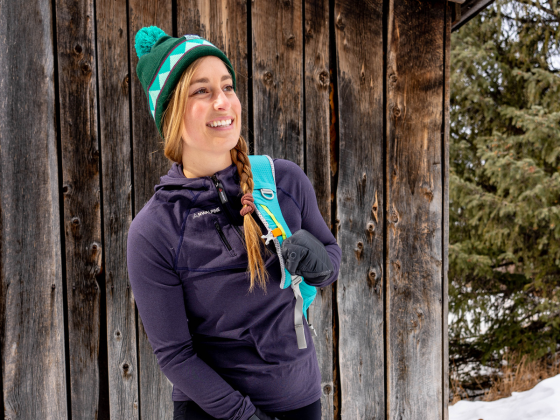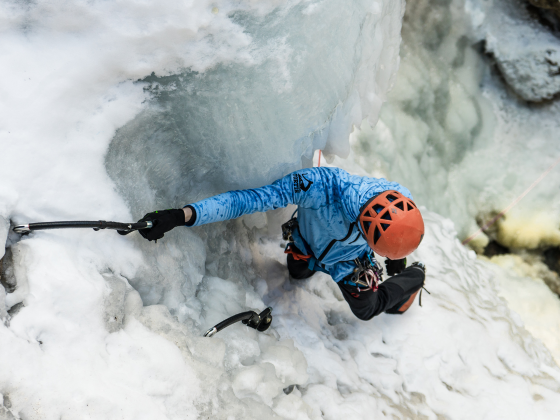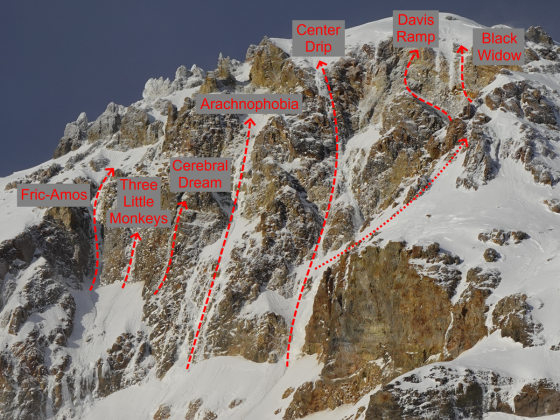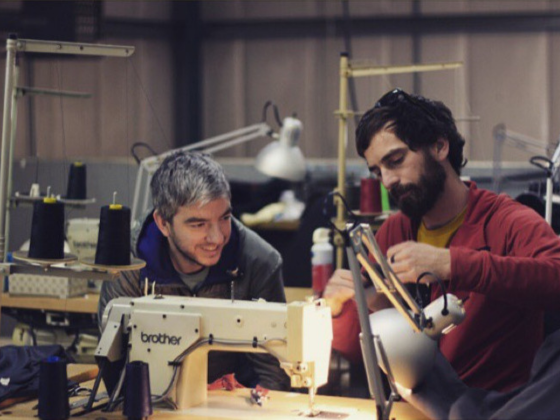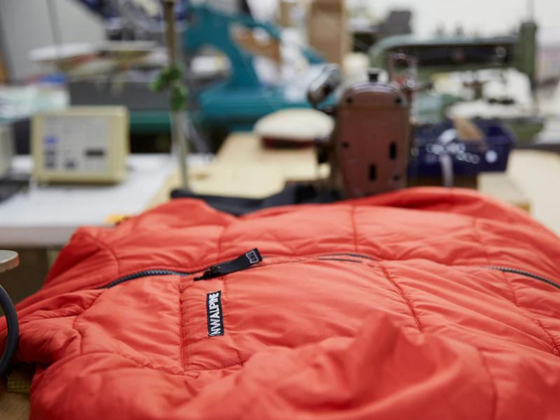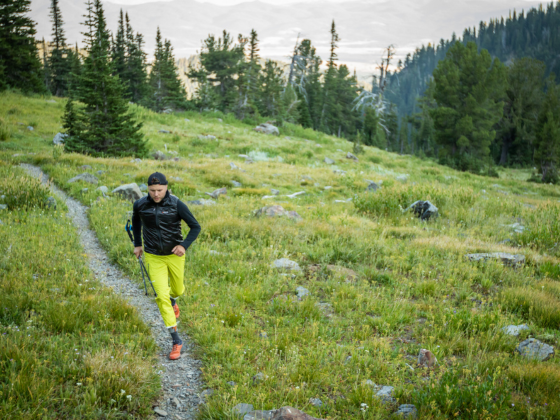Hispar Sar 2011By Bruce Miller
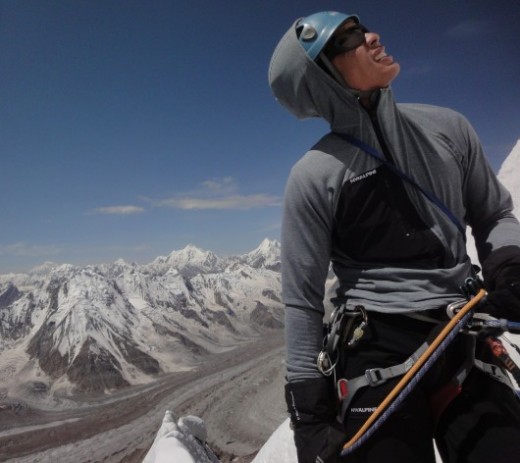 Climber: Steve Su Photo: Doug Chabot
Climber: Steve Su Photo: Doug Chabot
“How come we’re not climbing that?” is the question I was asking myself. It’s the question any climber on the way to something else up the Hispar Glacier has surely asked when they glimpse the Southwest Face of Hispar Sar: a big, steep, discouraging tooth with one perfect weakness. A spindly couloir splits the triangle to just shy of the 6400m summit. I took a last look before turning off to our Yatmura Glacier basecamp. We still had a ways to go. I wasn’t the first time I’ve turned away from an obvious prize because of other plans hatched in a kitchen 5000 miles away.
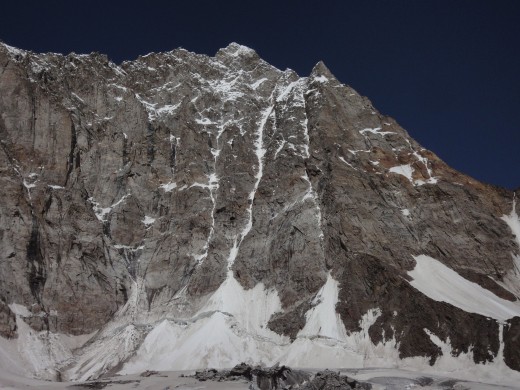 The route follows the obvious central couloir Photo: Doug Chabot
The route follows the obvious central couloir Photo: Doug Chabot
Doug Chabot, Steve Su, and I came to Pakistan intent on climbing the South Ridge of Pumari Chhish East. The inspiration came from a photo of the Pumari Chhish Group in Shiro Shirahata’s book “The Karakoram”, but it didn’t take much head scratching for us to nix that plan. The only passage above the upper ridge went directly through a lively serac band our photographs had led us to believe could be bypassed.
It didn’t take much discussion to settle on Hispar Sar as our plan B. It was still unclimbed despite four attempts. Simon Yates and partners accounted for two of those. He and Andy Parkin had very nearly succeeded in 2004, retreating from above the couloir in a storm storm. If the Hispar Glacier were a more fashionable climbing destination it would certainly have had more attention.
A long day of talus stumbling, not yet fully acclimatized, put us in a high cirque at the base of the route. Another day was spent glassing the line. The afternoon rockfall and wet snow avalanches were predictable. So, we set off at midnight on August 3, and hoped for the best.
 Climber: Bruce Miller Photo: Steve Su
Climber: Bruce Miller Photo: Steve Su
We crossed the schrund at 5000m. The next 1100m of couloir was brilliant, with varied terrain ranging from WI4+ to delicate mixed pitches. Near what we thought was the end of the couloir, we exited right, both to avoid the increasing afternoon rockfall and a looming cornice (hmm… previously unseen). It ended up being a full 7 steep pitches of unstable snow and loose rock (M5); in other words, the best 7 pitches of the route. The last of those, 20 hours after the schrund, put us on the South Ridge where we hacked out a knife-edged perch.
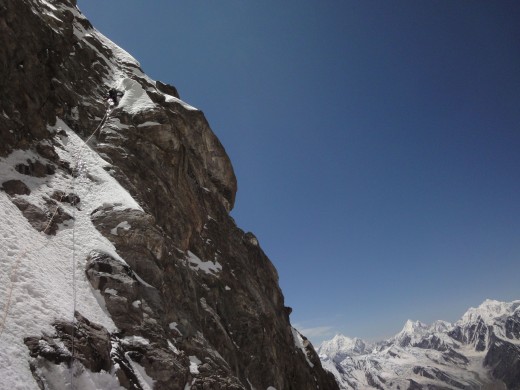 Climber: Steve Su Photo: Doug Chabot
Climber: Steve Su Photo: Doug Chabot
We quickly discovered our air mattresses, in their first open bivy, made excellent sleds and we spent a cold, restless night adjusting to stay put on our icy seats. The sun eventually reached us and brought some relief. We sipped our morning brews as we took in the Karakoram panorama from K2 to Nanga Parbat under clear skies.
The 300m to the summit above us looked easy. But, as is often the case, “easy to the summit” is the description of someone who hasn’t been there. We took us most of the day to get moving, climb those 300m, and rap back to the bivy.
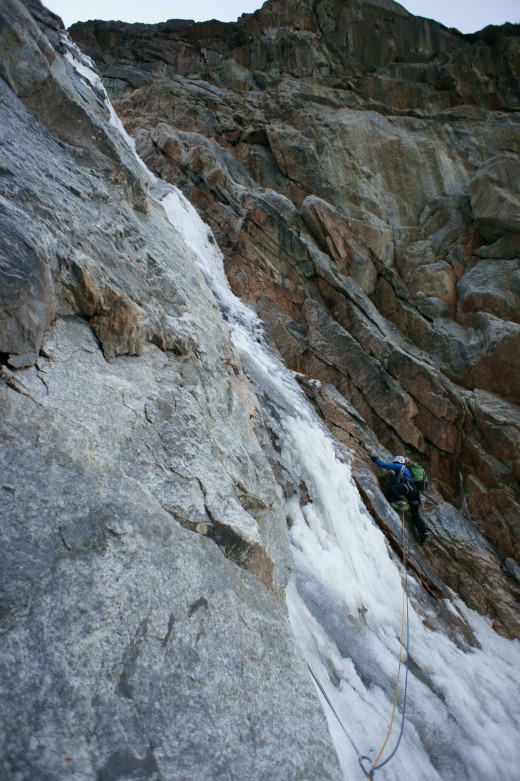 Climber: Bruce Miller Photo: Steve Su
Climber: Bruce Miller Photo: Steve Su
We descended early the next morning. Twenty-plus more raps. After a couple hours lounging, we reversed the long grind back to basecamp. Our old friends, cook and guide, Rasool and Ali were waiting with a congratulations and tea.
We spent our last available days hiking 20 miles back down the Yatmura Glacier and up to the Khani Basa Glacier to attempt Tatu Rutum (6,651m). Bad snow conditions and continued snowfall, quickly led to us abandoning our attempt. I appreciated that last detour. The Kani Basa Glacier amazed me with another slew of possibilities.
Many thanks to Northwest Alpine for making niche alpine gear. My search for a better salopette led me here. Steve and I weren’t disappointed. I haven’t found anything else comparable.





